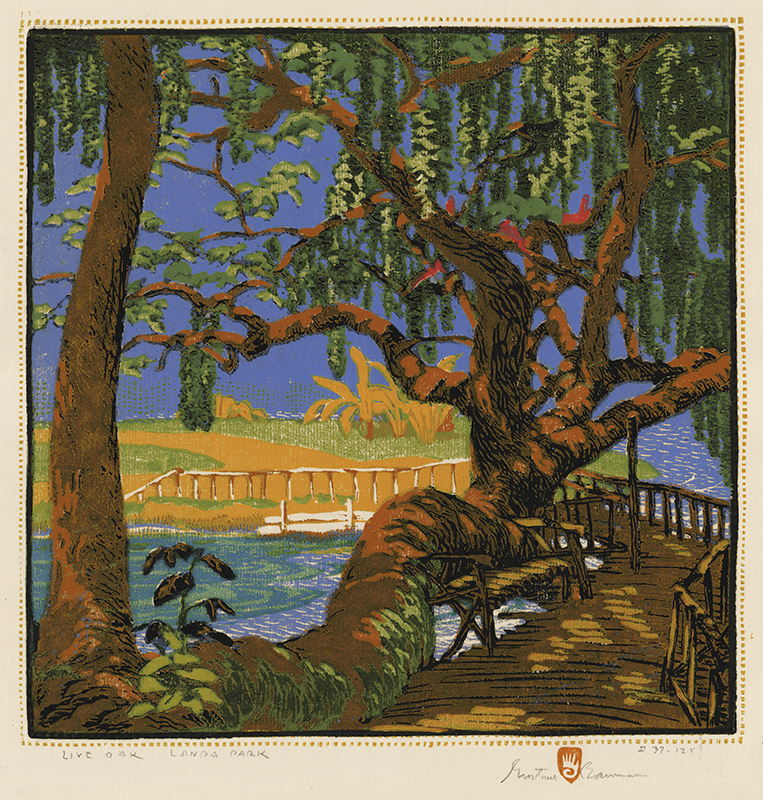Live Oak Landa Park is a color woodcut that originated in 1924 by American master printmaker Gustave Baumann (1881-1971). This impression was printed by the artist in 1929 and is pencil signed, titled, and editioned II 37-125. Live Oak Landa Park was printed by the artist from recut blocks on ivory Van Gelder Zonen laid paper. The image measures 12-7/8 x 12-7/8 inches.
The reference for Live Oak Landa Park is Chamberlain 100. For an explanation of the various editions and printing record for this color woodcut and the number of blocks used, we refer you to pages 298-299 of In A Modern Rendering The Color Woodcuts of Gustave Baumann: A Catalogue Raisonné.
Landa Park is a major recreation spot encompassing 196 acres in the northwest section of New Braunfels, Texas. This large vintage oak still lives, but its structure has drastically changed since Baumann’s rendition of it, and it is now protected from visitors. The benches are gone, as it the walkway around the tree. According to the plaque, this live oak is known as the Founder’s Oak, as the tree began as a seedling in 1700 in a major campsite of Central Texas Indians. According to early settlers, the Native Americans left messages to those who followed by weighing down the upper stems of such young trees horizontally to show the direction in which they had traveled.
Gustave Baumann was born in Magdeburg, Germany on 27 June 1881. Ten years later his family immigrated to the US, settling in Chicago. In 1896, Baumann began working in the commercial art field while saving money to study in Germany. After returning from Munich in December 1905 where he studied at the Kunstgewerbeschule, Baumann worked again in commercial art to support his family. In 1909, he discovered Brown County, Indiana where life was inexpensive and he could stay for three months. He produced a series of small format color woodcuts featuring the people and places of Brown County and then produced five large format color woodcuts. His woodcuts were accepted by the committee for the 1915 Panama Pacific International Exposition and he won a gold medal in 1916. Baumann headed east to Wyoming, New York in 1917 and taught at a summer school. From there he headed to Provincetown and New York City before returning to set up his studio in Wyoming. The southwest beckoned and he headed west in May 1918, stopping in Taos for the summer and fall. His funds were low and he needed to head back to Chicago but first stopped at the new art museum in Santa Fe to see an exhibition of his woodcuts. The rest, they say, is history.



